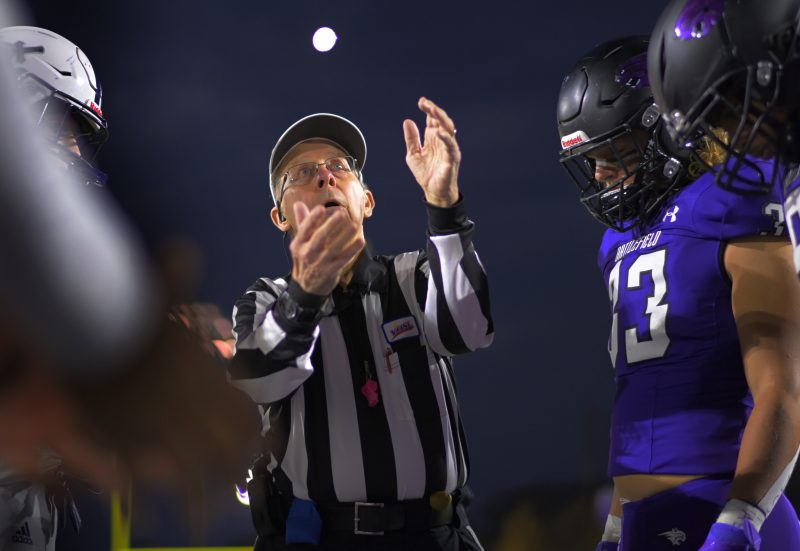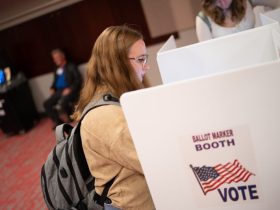There is a canonical presentation of voters in a democracy. Attuned to the central issues of the election — be they national, state or local — these voters carefully consider the positions of the candidates and perform an elaborate mental calculus. Candidate A aligns with the voter on a few things, but Candidate B aligns on more, and more important ones. Candidate B it is. On to the next contest on the ballot.
Written out like that, the idea is obviously ridiculous. Most voters scan their ballots for the candidates indicated as Democrats or Republicans and vote for those candidates. There’s nothing wrong with that, as such; the point of political parties, in part, is to provide a mnemonic for Americans to quickly identify candidates who broadly share their values. Why spend all that time reading about issues when the D and the R serve as accurate summaries?
That has become particularly true as partisan polarization has sharpened in the United States. Fewer legislators and candidates hold heterodox positions, meaning that the D and the R are more effective presentations of their views than they used to be. If you are moderately well informed, those two letters can tell you most of what you want to know about the candidates on most issues, even at the state or local level. At the presidential level, the letters are almost completely descriptive, given that the parties’ presidential candidates help define where the parties stand.
And yet there are still numerous voters who say they haven’t been able to decide between the two major-party presidential candidates in 2024. But there are different strains of “undecided.” For many, the question is probably less whether they prefer Vice President Kamala Harris or former president Donald Trump than whether they plan to vote at all. For a handful, their calculus of how the candidates’ positions comport with their own personal values is complex. And for many — perhaps, if we allow ourselves to be cynical, most — they simply haven’t been, and are not now, paying much attention to politics.
This isn’t new. There’s always been a clutch of Americans who are loosely attached to politics and whose opinions on political issues are therefore idiosyncratic. It’s been 20 years since Chris Hayes (well before his MSNBC days) described talking to undecided voters in Wisconsin during the 2004 election. He found fewer of the theoretical cautious/conscientious voters than people whose politics appeared to have been picked at random from piles of newspaper clippings.
One thing we’ve heard a lot this year is that undecided voters are still making up their minds in part because they want to learn more about Harris’s positions. This makes sense in theory; Harris’s presence as a candidate has been relatively short-lived, given the transition the Democratic Party made at the end of July.
But that’s just short-lived in the American sense. British Prime Minister Rishi Sunak announced parliamentary elections on May 22; they were held on July 4. That’s a 43-day election cycle. Harris has been a candidate for 78 days. There was a Democratic Party convention that dominated the airwaves for four days. There was a debate. Harris released policy platforms. If voters want to know what she’s running on, it’s there for them to consume.
In fact, the New York Times released polling last week delineating why voters who still described themselves as “undecided” were refraining from settling on a candidate. Conducted by Siena College, the poll asked those voters what their concerns about the candidates were. A plurality of those voters said Trump’s personality was their biggest point of hesitation. For Harris, a smaller percentage said they were concerned about her honesty and judgment.
Only a handful of people indicated that they wanted to know more about her candidacy.
If we sketch out a more realistic picture of an undecided voter, we can see why this isn’t a surprise. For the most part, they are not carefully sitting down and considering the information at hand, finding that their stack of information about Harris is still missing elements. They are, instead, not paying much attention at all and, perhaps, sometimes tacitly admitting that they aren’t paying much attention by saying they need to learn more.
Some in the media nonetheless seized upon this idea with alacrity. Consider how Politico described the Harris campaign’s flurry of media appearances this week: “Most of these are not the types of interviews that are going to press her on issues she may not want to talk about, even as voters want more specifics from Harris. Instead, expect most of these sit-downs to be a continuation of the ‘vibes’ campaign Harris has perfected.”
There’s been frustration from some reporters that Harris hasn’t centered her campaign on conversations with traditional media outlets but, instead, on a more limited schedule with podcast and online personalities. That seeps out of the Politico description: What voters want is policy information, which a Harris-Howard Stern conversation isn’t going to provide! The error in this argument should be immediately apparent — as should the reason that traditional outlets would elevate it.
Several things are true about the current media landscape. One is that the traditional media (including The Washington Post, obviously) has a more limited influence than it used to. Another is that some podcasts and influencers have much broader audiences — particularly among the constituencies the candidates hope to spur to the polls — than newspapers or cable news programs. A third is that this is useful for the campaigns, since they can more easily avoid tricky or challenging questions that traditional reporters might pose.
The solution is not to suggest that undecided voters are uniformly desperate for probing questions that will inform their votes. This is true of some undecided voters, sure. But everything else we know about those voters (including the Times poll above) indicates that those voters are anomalous. It’s safe to assume that the campaigns understand that, with four weeks remaining, the key to victory will almost certainly depend less on presenting undecided voters with complex policy proposals and extended, wonky conversations with editorial boards than on ensuring that those voters casting a ballot based on the D and the R are excited to go out and do so.








